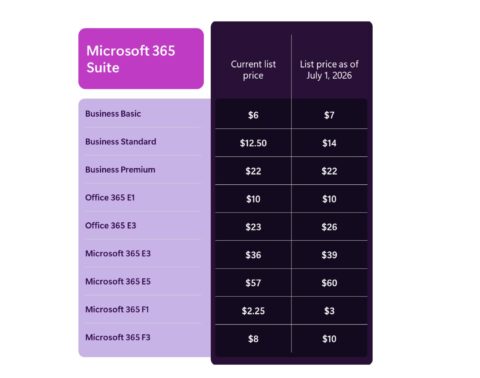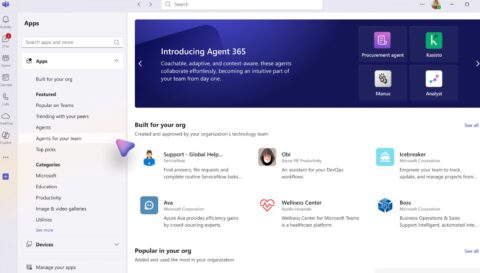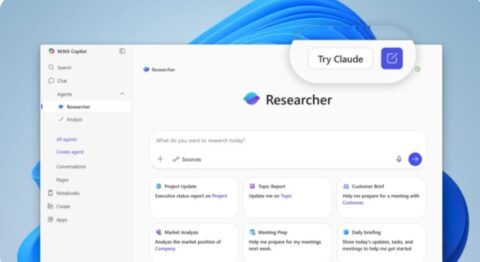Updated: June 20, 2024 (June 20, 2024)
BlogMid-size orgs: Your Enterprise Agreement days are numbered

For years, Microsoft has been nudging smaller and mid-size enterprise customers towards a new type of licensing agreement, known as a Microsoft Customer Agreement (MCA). But 2024 might be the year when this MCA requirement for this group of customers begins to roll out officially. For organizations accustomed to buying Microsoft products through an Enterprise Agreement (EA), there could be some big changes — both positive and negative — when moving from an EA to an MCA (or adding an MCA in addition to an EA).
Microsoft currently offers its EA customers different programmatic (built in) discount levels, depending on how many users and how many client devices they want to license. The more users/devices, typically the greater the discount.
The official minimum number of users/devices a customer currently needs to qualify for an EA is 500 to 2,399, a segment which is known as Level A. But Directions on Microsoft is hearing increasing chatter that Microsoft plans to phase out Level A completely and move those customers at this level to MCA-based licensing. And if that happens, the new minimum user/devices requirement for an EA officially may rise to 2,400 (which is now the entry point for the EA Level B discount tier).
It’s worth noting this coming change is the most recent step in a long, gradual phase-out process. A few years ago, Microsoft eliminated the programmatic discount for level A, which resulted in Level A getting pricing based on an estimated retail price, not pre-ordained discounting. A few years before that, Microsoft increased the official minimum to qualify for Level A from 250 to 500 users/devices.
We asked Microsoft if the rumors about Level A going away this year are true. A company spokesperson said that at this time the company had “nothing to share.”
What to expect when you’re expecting an MCA
If this change does happen, what should EA customers at Level A anticipate? An immediate price increase? More licensing complexity? Fewer negotiation levers?
As we like to say at Directions: It depends.
One thing is for sure, however: Level A customers currently on an EA need to start preparing now for a new volume-level construct, which will likely include an MCA and possibly a Cloud Solution Provider (CSP) reseller partner. If you’ve renewed your EA recently, you’re unlikely to feel the impact until the end of your current contract. If you haven’t, your pending EA renewal could be the event that triggers the EA-to-MCA change.
Microsoft unsurprisingly paints the MCA as nothing but goodness. On its Microsoft Licensing web site, the company describes an MCA as providing a “consistent and simplified purchase experience, with greater flexibility in how and where you buy.”
MCA contracts are shorter than EA contracts (around 9 pages vs. 30 for a typical EA) and renew automatically, where EAs must be manually renewed, typically involving a complex negotiation phase. All Microsoft cloud products and services are available via the MCA and all licensed products and services can be viewed and managed via a single portal. MCAs are available in most countries and can be purchased through CSP resellers or directly from Microsoft.
In terms of pricing, customers who are required to go with an MCA instead of an EA could end up paying the same or even somewhat less than they do for similar products and services today, for a few reasons. First, CSPs tend to have some pricing wiggle room. Additionally, the ability to buy month-to-month via MCA (without longer contract obligations) could help customers save on temporary summer employees, for example.
However, there is a chance that your overall price and overall spend for the entire agreement could end up being higher. Customers may lose some EA benefits, such as favorable terms when licensing on-premises products with Software Assurance. They may end up having to patch together multiple contracts handled by multiple resellers, which could result in not just more hassle, but higher costs overall. And having to engage in an entirely new contract review process could be a pain — even when compared to the many hoops though which an org typically must jump when renewing an existing EA contract.
Let the MCA buyer beware
“There may or may not be a direct price increase,” said Directions on Microsoft‘s head of Advisory Services and negotiation expert Dean Bedwell, “but there are ways you could pay more because of special terms.”
For example: Under an MCA, customers cannot purchase or renew Software Assurance for perpetual (non-subscription) licenses for products like Windows Server and SQL Server. As a result, customers may have to move some workloads to MCA-based server subscriptions at a higher cost or use the Open Value (OV) program, which provides the option to renew SA on perpetual licenses but does result in managing purchases through two programs, often at higher cost.
In the case of Microsoft 365, customers who are moving from an EA to an MCA will need to reassess how they license Microsoft 365 subscriptions. EA contracts typically offer organizations a larger set of choices when it comes to Microsoft 365-related license types and, in some cases, preferential use rights.
Under an MCA, customers lose the ability to purchase certain Microsoft 365 User and Device Subscription Licenses (User SLs and Device SLs, respectively), for instance. While some workarounds are possible, they’ll likely cost companies more. Customers may need to use two purchasing programs — MCA plus something like the aforementioned Open Value — to get the same coverage.
Another gotcha: Teams-less Teams
Another new worry: There’s the strong possibility that moving from an EA to an MCA could result in Microsoft categorizing a company as a “net new customer,” which would mean that customer would be no longer eligible to buy Microsoft 365 suites that bundle Teams. This could result in orgs having to repurchase Teams separately, which will cost more due to the increased costs of the split Teams licensing that is now required for net-new customers.
Directions asked Microsoft whether this would be the case and we received a “nothing to share” from a company spokesperson. But in a PowerPoint deck for partners, there’s a clause which seemingly confirms an EA-to-MCA move will trigger the net-new customer issue. That clause:
“Due to systems limitations, customers will also not be recognized as existing customers if they change their purchasing channel except when moving to EA/EAS or moving to/from MCA-E and to/from Buy Online (Direct).”
Customers at Level A may have little or no recourse if they’re pushed out of the EA bucket into the MCA one. But they should at least know possible licensing issues they may face and try to mitigate when possible.
Related Resources
Transitioning Microsoft 365 from an EA to an MCA (Directions members only)
Transitioning Windows Server from an EA to an MCA (Directions members only)















